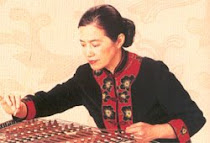Traditional Chinese music can be traced back 7,000 - 8,000 years based on the discovery of a bone flute made in the Neolithic Age. In the Xia, Shang and Zhou Dynasties, only royal families and dignitary officials enjoyed music, which was made on chimes and bells. During the Tang Dynasty, dancing and singing entered the mainstream, spreading from the royal court to the common people. With the introduction of foreign religions such as Buddhism and Islam, exotic and religious melodies were absorbed into Chinese music and were enjoyed by the Chinese people at fairs organized by religious temples.

In the Song Dynasty, original opera such as Zaju and Nanxi was performed in tearooms, theatres, and showplaces. Writers and artists liked it so much that Ci, a new type of literature resembling lyrics, thrived. During the Yuan Dynasty, qu, another type of literature based on music became popular. This was also a period when many traditional musical instruments were developed such as the pipa, the flute, and the zither.
During the Ming (1368 - 1644) and Qing Dynasties (1644 - 1911), the art of traditional opera developed rapidly and diversely in different regions. When these distinctive opera styles were performed at the capital (now called Beijing), artists combined the essence of the different styles and created Beijing Opera, one of three cornerstones of Chinese culture (the other two being Chinese medicine and traditional Chinese painting) which continue to be appreciated even in modern times.

Besides these types of music, Chinese peasants were clever enough to compose folk songs, which also developed independently with local flavor. Folk songs described working and daily life such as fishing, farming, and herding and were very popular among the common people.

In the Song Dynasty, original opera such as Zaju and Nanxi was performed in tearooms, theatres, and showplaces. Writers and artists liked it so much that Ci, a new type of literature resembling lyrics, thrived. During the Yuan Dynasty, qu, another type of literature based on music became popular. This was also a period when many traditional musical instruments were developed such as the pipa, the flute, and the zither.
During the Ming (1368 - 1644) and Qing Dynasties (1644 - 1911), the art of traditional opera developed rapidly and diversely in different regions. When these distinctive opera styles were performed at the capital (now called Beijing), artists combined the essence of the different styles and created Beijing Opera, one of three cornerstones of Chinese culture (the other two being Chinese medicine and traditional Chinese painting) which continue to be appreciated even in modern times.

Besides these types of music, Chinese peasants were clever enough to compose folk songs, which also developed independently with local flavor. Folk songs described working and daily life such as fishing, farming, and herding and were very popular among the common people.













































0 comments:
Post a Comment